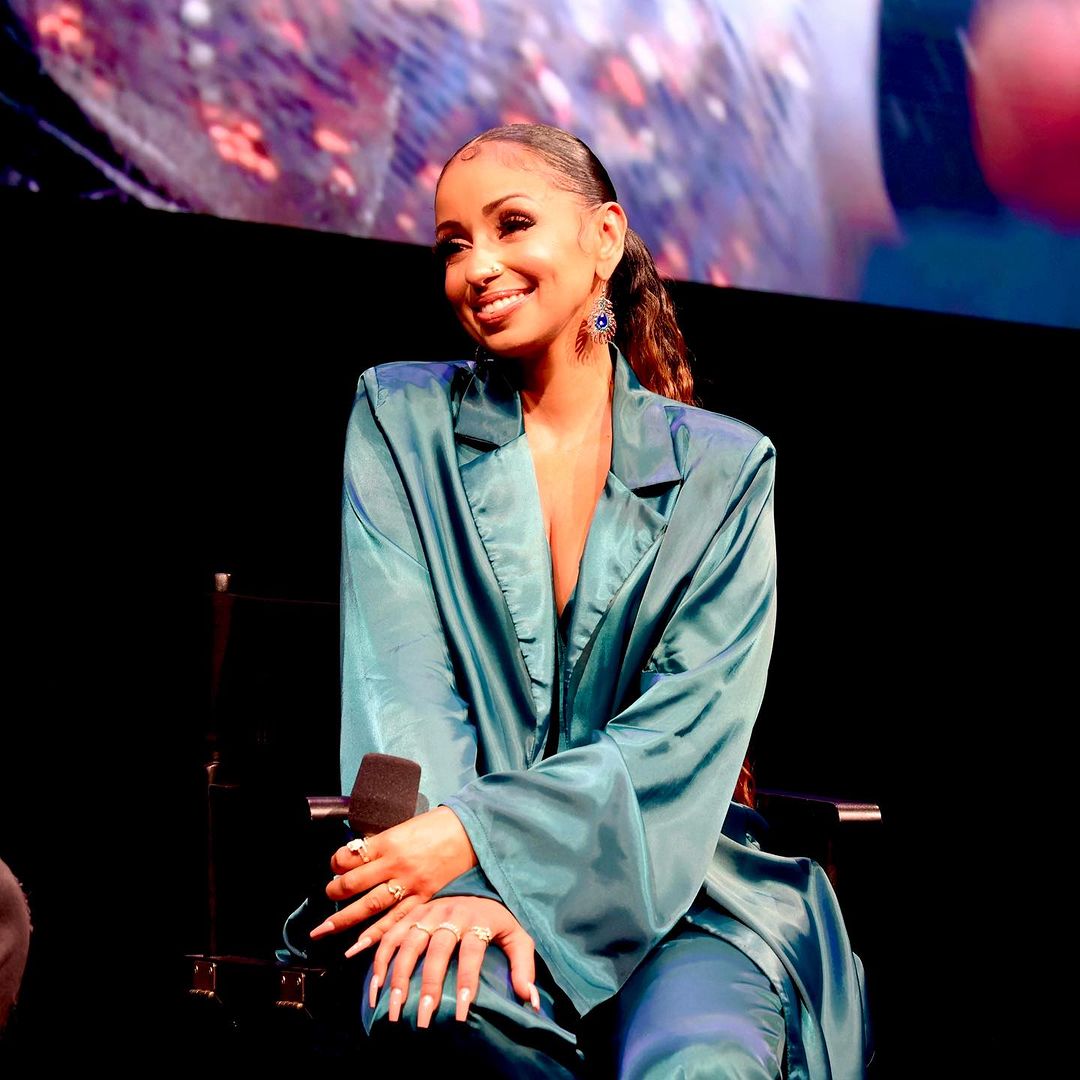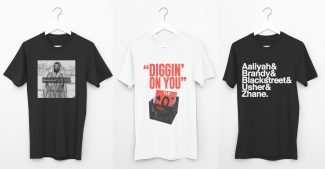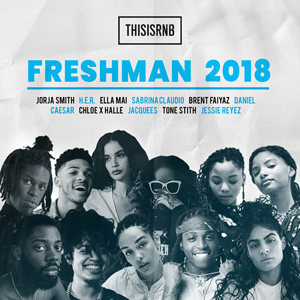Hip-hop 50 celebrations have music lovers flipping through their favorite moments in rap, but Samsung and Imperial Marketing Group wanted to make sure that the singers intertwined in the culture weren’t left out. On Wednesday, November 1, they organized a commemorative fireside chat with Grammy Award-winning recording artist Mýa at the Samsung Headquarters in New York City.
The musician discussed her legacy thus far, including her early start in the business, iconic collaborations, taking the independent route, her new single, “Whine” with Bounty Killer, and more. Read a snippet from the conversation curated by Billboard’s Deputy Director of R&B and Hip-Hop, Carl Lamarre, below.
Carl: We’re celebrating 25 years of Mýa. Can you believe it? How has the journey been?
Mýa: I wake up every day with gratitude. The journey is real, but it always feels brand new, like I’m just getting started. And that’s when you know you love to do what you do. And, of course, I couldn’t do it without each and every one of you [the fans]. You keep me going. Supporters keep me going. And it’s just all a blessing and a privilege.
Carl: You came through strong with a top ten record, “It’s All About Me.” Talk about how that record with Sisqó came together.
Mýa: Okay. Well, I’m from the East Coast. I am a Washington, DC girl. Down the street from where I grew up was an office called University Music Entertainment, an independent label founded by Haqq Islam and Lita Rosario. Fresh out of high school, I signed an independent label deal with them. There was artist development. They resemble somewhat of a Motown [Records].[ Haqq] was our Berry Gordy. And when I say our I mean Pure Soul, the all-girl gospel group, and Dru Hill out of Baltimore. So those were my labelmates. And then he went on to sign Terry Dexter out of Detroit and Elsie Muniz out of Miami. But I was his third act and solo artist.
We met through my dad. My dad is a musician. He sings, and he still tours to this day. At the time [Haqq] was looking for a female soloist, and he came to my living room to audition me after school high school one day. He asked me to sing acapellas. So I did and we began working together my last year of high school, The following year, I went to college at The University of Maryland in College Park. So I’d be on a train back and forth to Philly, cutting my first demos that ended up on that first album and Dru Hill was very instrumental in that first album with Darryl Pearson, who’s also from Baltimore.
I got together with Darryl and Sisqó first. Then we hiked it down to Atlanta to finish the album with the entire Dru Hill. We were all indie labelmates, so that is how the actual in-house collaboration came about. It was very much a family environment.
Carl: 1998 was an illuminating time. R&B was booming, and it is still booming today. At the time, you had Aaliyah, Mary J. Blige, Brandy, Monica, and many heavy hitters on the women’s side. Talk about prepping yourself for that kind of climate, knowing that so many other women you thriving and trying to find your place.
Mýa: You never know where life takes you. And the funny thing is that I’d been performing since I was about three in all kinds of different places through majorettes, gymnastics, many styles of dance, and specifically tap dancing – hoofing. When I visited New York City for the first time, I was 10 years old. I tap danced in the Macy’s Day Parade with a bunch of other dancers. My mother took me to see ‘Jelly’s Last Jam,’ the movie ‘Tap’ had just come out. Savion Glover was a big influence on me, and that’s when my direction in tap dance changed. But I have been a performer since I was a little kid. And all I wanted to do was Broadway when I watched Gregory Hines in awe. So that was just the initial goal for me.
I was in the midst of doing the college thing first to study theater, the arts, etc. But it just so happened that the record deal happened first, and Broadway is always there and I plan to do that as well. So I was very bold, very confident, and I would say ready because of the experiences of discipline that the arts and all the teachers that made us get it right had instilled in us. But it can also be very intimidating because it’s not the traditional route of life, especially as a young girl from Maryland. So you wonder if you’re making the right decision, but I’m very much like my father, too. He takes risks, and he’s still doing what he loves to do. So follow your joy, and it can take you 25 years later and beyond because we’re just getting started, by the way.
Carl: Speaking of ‘98. Talk about the video for “Take Me There” for the Rugrats movie soundtrack with Blackstreet and Mase.
Mýa: I remember the start of creating this record in Los Angeles, California. I was about 18 popped up in a studio, and there was the legend himself, Teddy Riley. He does so many jams that, you know, I grew up dancing to and singing along to. So, to be working with him… He’s definitely a tough musician, an amazing producer, but very meticulous. He’s also a Libra like me and we’re very detail-oriented, so it was a joy to record the song with him and watch him work the way he does. And then we just popped up on the video set a short time after.
I remember the night before, there was a choreographer named Jamie King. He’s iconic. I learned the choreography that night before for “Take Me There.” And we filmed it the next day. Yeah, but it was fun. It’s like being a big kid when you pop into certain worlds. It’s always surreal being on video sets, movie sets, etc. You get to play.
Carl: I also have to mention “Ghetto Supastar.” ODB (Ol’ Dirty Bastard) played a huge role in that. Let’s talk about how ODB helped make that and you being the leading lady on that record.
Mýa: I remember coming up to New York. I think my dad and I either drove or we took the train. It was the shortest session in my life that I’ve ever had. It was a hook (chorus). I stepped in. Wyclef [Jean] was there. He said, ‘Okay, sing it a couple of times down.’ That I did, and the session was done. He chose his favorite vocal take (pass) after I left. They were a series of listening sessions and at the time, I only had one single out, and that was “It’s All About Me” featuring Sisqó. I was the new girl on the block. And it wasn’t until later on that I found out that there were some heavy hitters that sang that same hook, but ODB was the one that spoke up in listening sessions and meetings and said, ‘Who’s that? That’s the one right there. That’s magic.’ But I was not established like everybody else, so he had some say and was very instrumental in keeping me on the track, when having the new girl with no accolades on the song was a bit questionable.
Carl: I love how you mentioned my brother Wyclef. You worked with him and Jerry Wonda on Fear Of Flying. Working with them and evolving from your first album, talk about how your skills as a songwriter progressed.
Mýa: Well, you know, first of all, you grow up and pretty fast in this world and society. And then in front of lots of people. I was very mature, coming of age in front of the world. And I had a lot to say. But once again, being in that brother-like or family-like environment where they’re watching over and watching after you, you feel protected, you feel supported. And they were all about that. They’re very talented themselves. They play, they write, they produce, they vocal produce. And it’s just one of those engaging spaces like a performing arts school where you can just go and be free, and they encourage that. So, being in that environment, I got to flex a little bit. Exercise songwriting and all of that. But that album was definitely a turning point for me. Because I was transitioning in my life, becoming a woman from a teenager. I just hit my 20s. They’re very talented guys. Their process is just a vibe. They vibe out. A lot of improvisation. A lot of synergy. Tough musicians. They start on the guitar, bass, or keys. So you witness everything being birthed from scratch, right in front of your eyes, and it’s a beautiful, magical experience.
Carl: Is there anybody in the industry that you looked up to that today it is more than music? It’s a friendship that you have?
Mýa: I mean, there are so many… But one man who instilled a lot of wisdom and changed my outlook on business in general, preserving yourself, your spirituality, your sanity, your pockets, and your art… and protecting that, was Prince. He offered a lot of amazing advice to the next generation because he cared. He’s seen a lot. He’s been through a lot. He’s fought for a lot. And he’s an amazing creative phenomenon, honestly. [He played] over 17 instruments, composing everything himself. And he loves to do what he does. And he shows up and does it very well. But he’s become an independent thinker and boss with new business models, passing on that knowledge, dropping gems d those gems in every conversation that he’s had with artists like myself, Janelle Monáe, and we take all of that stuff with us. He knew that it would matter, not just ownership, but protecting and preserving the pure love for music, with self-love, which can often get tainted in a business that is sometimes based only on superficial vanity numbers, charting, budgets, or what other people define to be success. And it’s very easy to give up and throw in the towel. So he was laying down those questions and a foundation, that stonework so that we can hold on to what’s going to take us further on in life. And I’m still independent because of those conversations that we’ve had.
Don’t get me wrong, being with a major label can be beautiful. It was the start of my career. And I still believe in the majors, and it is essential for an artist that wants to break through in a major way. There are however so many different ways with partnerships, etc. to conduct business differently. But to think independently and apply that to your operation, no matter what it is you do as an entrepreneur, really preserves you in the long run, as long as you’re willing to put in that work for years because the return is not immediate.
I’m very, very glad that I listened. When a pioneer like that, who’s experienced, speaks, you listen and apply. Then you begin to see the shift on why they were speaking when you also experienced the gems, but also the benefits that you reap along the way, in every aspect, physical, mental, spiritual, financial, and creative.
Carl: You’ve done so much in the dance hall space. Sean Paul, Beenie Man, and your new single “Whine” with Bounty Killer. Let’s talk about the dance hall culture and your love for Jamaica.
Mýa: Well, it’s so freeing. It’s right there. You can find it in every hood from lingo, dialect, accents, and specific dance styles. But one of the things that I love about traveling to the Caribbean is the realness, the rawness, the nature, the beauty, the grind, and the joy. It’s not too materialistic. The simple things and the simple life are enjoyed. And even in everyday survival, there is also a celebration, and you feel it, hear it, see it, smell it, and certainly taste it in the food. You hear it in the rhythms, and I feel closer to my ancestors every time I go. From the sunshine to the ocean, there’s a sense of negative deprogramming, with more peace and less urgency. Also, that sense of family that I so love…Jamaica always feels like home.
I love dancehall because it’s liberating. There’s nothing like dancing from just a feeling and improving vs choreography. So I love the carefree nature and boundary-breaking aspect of it. It can get very edgy and wild, which is always entertaining. I’m talking about littera;;y jumping off of speakers into a split on concrete. It’s definitely a sight to witness!
Carl: Let’s talk about your single “Whine.” The video looked fun!
Mýa: So I did a lot of recording in 2019. Then I did this show with my girl Lil Kim called ‘Girls Cruise.’ We were in the tropics, in the Caribbean, and just cruising and sailing. It was the vibe that I was on. and tend to always be on. So I hit up my boy DaDa [Mills], who manages, DJ Hardwerk whom I have a big archive of unreleased music with. Both of them are actually Jamacian. I voiced the type of record I wanted to put out into the universe that embodied peace, fun, carefree, beautiful, sexy, sultry, and feminine vibes. The track was executed and the song was written by songwriters Theron Tomas, Mavelle Gilbert, and myself.
We sonically made ‘Whine’ in 2019. I went down to Jamaica and put a team together guerilla-style to shoot the music video. One of my choreographers Derek Brown and a video director Josh Sikkema, whom I’ve been working with on the independent side directed this video. I put together my own team of hair and makeup and hit up the Dancehall Queens right there locally. Dance Jamaica, Latonya Style is one of the dancehall ways that coordinated the casting. Yeah, we had a lot of fun, but that was just the solo version.
There were a couple of people that I had in mind for a feature, but we have solo versions shot, and in 2021, I said okay, ‘I’m starting to sit in on this record.’ The other features aren’t right, and one got locked up. So we shot this in Jamaica; why not just get someone from Jamaica on the record? But it has to be legendary.
So I hit up Bounty in the DM’s like, “Hey, I have this record I’D love for you to bless (this is after the verzuz with Beenie Man.)”And within a couple of days, it was done. That’s what you hear now on ‘Whine.’ So we went back down to Jamaica in 2021, linked up at the legendary Tuff Gong Studios, and did another shoot day at the same 2019 location in Kingston, to insert Bounty Killer into the video.
25 Years Of Mýa was presented by Samsung in partnership with the Imperial Marketing Group.
*Cover photo credit:Walik Goshorn




